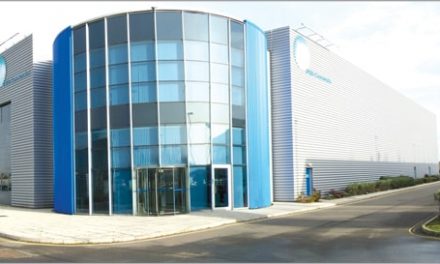Next Generation of Collaborative Robots Will Transform the Industrial Workforce
As industry moves into the era of Smart Manufacturing there are several emerging technologies that will be integral components of this cognitive manufacturing environment. One of those technologies is the next generation of industrial robots. One of the most significant aspects of this constantly progressing technology is the rise of the new “cobot” workforce, where humans and machines will work side by side collaboratively and safely.
But the bigger picture is how the use of robotics has been steadily moving beyond the walls of the factory and production lines. And even in the manufacturing space the use of robotics has moved beyond the caged production robots that had to be isolated to protect the human workforce. Robotics is being used in many applications like warehousing, biotech and pharmaceutical, training for medical personnel, law enforcement, working in hazardous and contaminated areas, customer service in hotels and retail, and surveillance to name just a few instances. Robots can now perform complex surgical procedures guided remotely by a human surgeon. Robots can help customers with their shopping, picking items and delivering them.
Today, Amazon has deployed over 200,000 robots in its warehouses. The retail giant built many of its warehouses specifically for mobile robots that can autonomously transport entire shelf units and move them around the warehouse intelligently completing fulfillment and delivery. Amazon felt the robots it used in its warehouses were so vital to its success that it bought the robot company (Kiva). A significant list of robotic suppliers is now offering a range of collaborative and multi-functional robots capable of performing more human-like tasks for the benefit of industry, business, and society.
The Workforce of the Future: Humans and Machines Working Together
One of the more promising technology trends in robotics in recent years has been the emergence of collaborative robots or cobots. The future appears to be already here when it comes to cobots, with the global growth rate of deployment exceeding 25 percent annually. This growth is not just related to use of collaborative robots, but to a convergence between conventional industrial robots and cobots, which are increasingly adopting many of the features and benefits of cobots because of advances in sensors, machine vision, motion control, and, importantly, AI. In the future, cobots won’t just operate in factories and warehouses, but in offices, shopping malls, and construction sites. It won’t be big bulky machines, but rather smaller, more agile, and much smarter human assistants.
To fully understand the impact that cobots can have, it’s necessary to understand exactly what they are. Essentially, they are a specialized group of robots designed with a particular set of technologies that enable them to interact with human workers in a shared workplace. Using advanced sensor and machine vision technology along with AI, these machines were created to address the safety challenges posed by conventional industrial robots. A protective stop is activated when a cobot comes in contact with or is in a certain proximity of a human worker, ensuring that the motion of the cobot is halted and does no harm to the person.
One of the basic concepts of a cobot is for humans and robots to be interdependent and safely focus on what each of them does best. This makes cobots a good solution for acting as assistants to workers and trades people, performing tasks in a cooperative way that would be too difficult for either the worker or the robot. The basic difference between cobots and conventional robots is not so much about the technology used, but more about the application and the type of tasks they perform. Cobots are not meant to replace their human counterparts, but to work directly with them to improve productivity and enhance the safety of the human worker.
Benefits of Collaborative Robots in the Workplace
Collaborative robots provide many benefits over traditional industrial robots as safe and flexible machines that can work with humans. They can support the workforce in the warehouse, production line, or construction site relieving them of many heavy unergonomic and tedious tasks. Additionally, they can add automation to parts of a production line with minimal changes to the existing automation equipment. The flexibility and affordability of smaller more portable collaborative robots affords smaller manufacturers the opportunity to automate their processes. For larger companies such as automotive manufacturers with automated production lines already in place, the addition of collaborative robots provides support to workers in areas such as final assembly that have traditionally been difficult to automate and are more likely to be the source of worker injuries.












